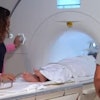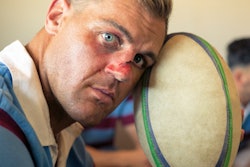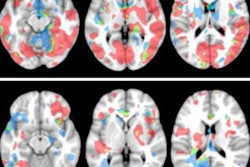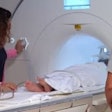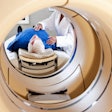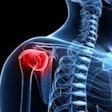CHICAGO – Cross-sectional details of soft tissue and bone seen on MRIs show patterns in why so many youth baseball players complain of elbow pain, according to a study presented November 30 at RSNA 2023.
“When we look at the forces that baseball players, even Little League baseball players, deal with during routine practice and games, it becomes apparent why elbow injuries are so common amongst this group,” said study co-author Vandan Patel, a radiology-orthopedics research scholar at Children’s Hospital of Philadelphia in Pennsylvania.
Patel and colleagues led a retrospective study to review elbow MRI exams from 130 youth players (18 years of age and younger, 115 boys and 15 girls) evaluated for elbow pain. The average age of the study group was 13.9 years. Importantly, two radiologists classified 85 patients as “skeletally mature” and 45 patients as “skeletally immature.” The researchers hope that the results of this study will help to identify elbow injuries in children who play baseball and to individualize treatment based on skeletal maturity.
 Sketch of developing elbow, before and after growth plate closure. Image and caption courtesy of the RSNA.
Sketch of developing elbow, before and after growth plate closure. Image and caption courtesy of the RSNA.
Estimates show that 20% to 40% of youth baseball players between the ages of nine and 12 complain of elbow pain at least once during the season, according to an RSNA statement. Patel and his team’s research showed that the four most common MRI findings in skeletally immature youth players are the following:
- Fluid build-up around the joint
- Stress injuries near the growth plate
- Fractures
- Osteochondritis dissecans lesions
The research shows that youth baseball players who have not yet reached skeletal maturity might be especially vulnerable to elbow pain and injuries. This is because repetitive motion and force of throwing a baseball place a large amount of stress on the growing bones, joints, and muscles of the elbows.
At the source appears to be the condition of growth plates in skeletally immature children. Growth plates are areas of bone that are made up of cartilage, a rubbery and flexible connective tissue that allows the bones to grow and change in shape as a child ages, according to the investigators. Because growth plates are weaker than surrounding muscles and bones, they are prone to injury that can lead to either reversible changes or permanent deformity.
On the other hand, skeletal maturity occurs when the growth plates have closed and no more bone (or growth) is being made.
In skeletally mature players, the injury pattern shifts from the growth plates to the soft tissue, the CHOP team reported. These players most often had triceps tendinosis, and fluid build-up in the bony area of the elbow where the ulnar collateral ligament attaches. Injuries that required surgery included intra-articular bodies (small fragments inside the joint), and unstable OCD.
“Tissue vulnerability and, thus, sites at risk for injury, change with growth and maturation. A younger player injures differently than an older player,” said the study's senior author Jie C. Nguyen, MD, also at Children’s Hospital of Philadelphia.


